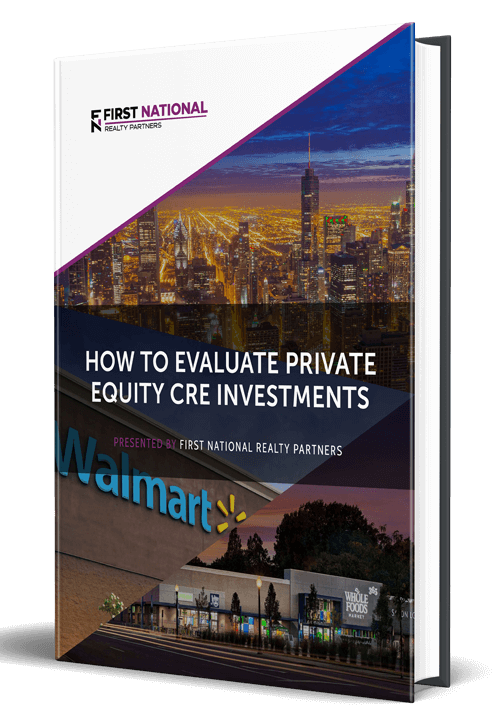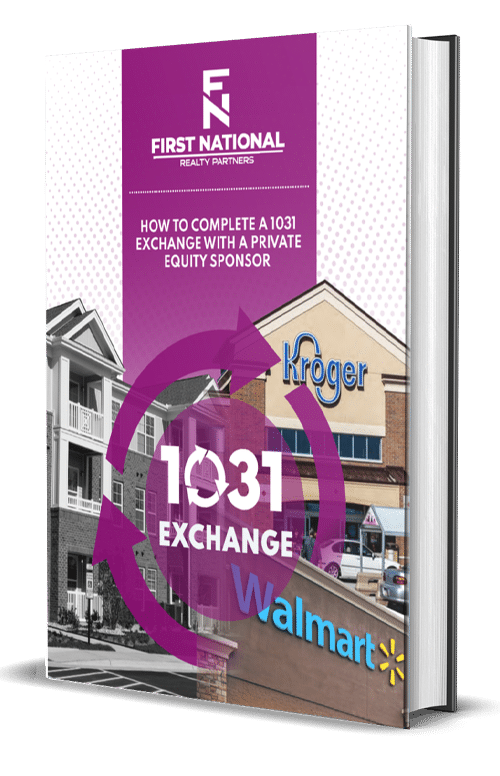When evaluating a property for purchase, one of the most important elements of the due diligence process is a review of the existing commercial leases. The intent of the review is to identify the major components of the lease and to use them in a financial model or in the risk assessment of the deal. But these are complex legal documents, and as such, their major clauses are the subject of this article. Let’s start with the basics.
What is a Lease?
A commercial lease is a contract between a property owner and a tenant. In return for a specified rental payment, the tenant is allowed to use a designated space for a specific purpose.
There are two commonly used types of commercial leases: a gross lease and a net lease. In a gross lease, the tenant’s rent payment is all inclusive and the property owner is responsible for paying the property’s operating expenses. In a net lease, the tenant is responsible for making a base rent payment plus some extra portion to pay for the expenses associated with operating the property’s common areas.
The major components of a lease are discussed in detail below.
Lease Term
The term of a lease defines how long the contract will remain in force. It has a start date and an end date, and may contain several renewal “options” that allow the tenant, at their own discretion, to extend the base term of the lease for an additional period of time. For example, a lease could have a base term of five years plus two, one-year renewal options that the tenant can exercise if they so choose.
From an investment standpoint, it is important to review the remaining lease term for each tenant at the time of purchase. Longer terms equal more stability and less risk. Shorter terms equal less certainty and more risk because the space would have to be renewed at then-market rates, which could be uncertain.
Base Rent & Reimbursed Expenses
The base rent defines the amount of money that the tenant is required to pay each month. Base rent is commonly measured as an amount per square foot, per year. For example, if a tenant leased 10,000 SF at $10 per square foot, their annual rent would be $100,000 or $8,333 per month.
In a net lease, the tenant may have to pay some additional rent to cover their pro rata share of the property’s common area maintenance costs, such as property taxes, HVAC, insurance, and maintenance. The exact amount is based on the square footage leased and the type of net lease. In a so-called triple net lease (NNN), the tenant is responsible for all of the operating expenses. In a single and double net lease, they are responsible for a portion of them, which is outlined in the lease agreement.
Escalations
The base rental amount for a commercial space rarely stays the same over the term of a lease. To account for the increased cost(s) of operating a property, there are “escalations” that boost the amount of the base rent over time. Escalations can be a set percentage like 2%; they could be tied to an index like CPI; or they could be a fixed dollar amount.
Identifying escalations are important for financial modeling purposes because they can have a major impact on a property’s cash flow over the term of the investment holding period.
Expense Stops
In a gross lease, where the property owner is responsible for operating expenses, they are exposed to the risk of rising costs. If insurance premiums or property taxes should go up, they would have to shoulder that expense; as a result, to protect themselves from this risk, they may seek to include an expense stop in the lease terms. If they do, it means that they will pay all of the property’s expenses for the first year of the lease. Whatever that amount is, it sets the “stop.” In future years, anything over this amount would be the responsibility of the tenant(s).
This is another element that is important to identify for financial modeling purposes. In a pro forma, these must be included to get the most realistic picture of bottom-line cash flow possible.
Concessions – Free Rent and Tenant Improvements
Often, to entice a prospective tenant to sign a lease, a property owner will do a few things to sweeten the deal. Two of the most common are to include free rent, or to provide some money in the form of a tenant improvement allowance.
Free rent doesn’t necessarily mean that the tenant gets to occupy the space without paying any money. Typically, it means that the tenant is offered some number months of rental credit that is used to reduce their monthly rent over the term of the lease. In a very simple example, suppose a tenant signed a one year lease that included one month worth of free rent. If that one month was worth $1,200, it would be used to reduce the monthly payment by $100 over the term.
With regard to tenant improvements, occupants of retail spaces and office buildings tend to have very specific requirements that are needed to operate their business. Often, these requirements are physical, meaning certain types of shelving, refrigeration, insulation, or an interior build-out. These types of improvements are expensive and it is common for a property owner to offer to pay for all or some of them as part of the lease agreement.
Again, both of these items are important to understand for financial modeling purposes because these are important inputs that are needed to calculate accurate return metrics.
Termination Rights & Events of Default
Termination and default are two critical components for assessing the risk of the deal.
Termination clauses outline when the lessee or property owner have the right to terminate the lease, as well as the acceptable reasons for doing so. For example, suppose there is a major storm that damages the property to the point that it is no longer safe to occupy. In such a case, the tenant may have the right to terminate his or her lease with no penalty and walk away from the deal.
Clauses that deal with default typically outline two things: what constitutes a default, and the property owner’s remedies for curing it. For example, a default could be defined as two consecutive months of missed rental payments. Remedies for curing a default could include things like late fees, adding interest to the back rent, seizing a security deposit, eviction, lawsuit, lease termination, and placing a lien on the tenant’s assets. Curing defaults can be an ugly business, but the terms must be outlined in the lease to ensure both parties are aware of the potential consequences of a default.
Subleases and Co-Tenancy
If a tenant’s need for space changes over the term of the lease, one potential option for dealing with it is to sub-lease. For example, suppose a tenant agrees to 10,000 SF of leased space, but the tenant’s business takes a turn for the worse and it turns out they only need 5,000 SF. Instead of attempting to terminate it and pay the resulting penalties, they could sublease 5,000 SF of space to another party. In many cases, subleasing/subletting can be a win/win. The tenant gets to reduce their rent and the property owner maintains the occupancy of the space and gets its associated cash flow.
Co-Tenancy is particularly common in retail spaces where a tenant may rely on an ecosystem of other tenants to drive traffic to their own store. For example, suppose there is a shopping center that is anchored by a grocery store and supported by several other complementary tenants. If some number of tenants leave the center, the remaining tenants may be entitled to some sort of short-term relief until the space is filled. That relief can take the form of a reduced rental rate, some sort of abatement, or an adjustment of the rent to be based on the tenant’s gross sales.
Parking and Signage
Depending on the needs of the business owners that occupy a commercial space, a lease may specify a certain number of required parking spaces. This is particularly important for retail and office spaces in urban areas where parking can be at a premium.
Also, retail and office leases may specify what types of signs that a business can display and where they are allowed to do so. This may be partially dependent on local zoning laws that specify how big a sign may be, as well as where it can be placed on the property.
Hours & Access
A lease, particularly one for an office, may specify what hours the tenant is allowed to access the building or what times they are required to be open. It may also define what types of access the tenant has to the building, and if visitors are required to sign in with security or carry some sort of visitor identification.
Summary & Conclusion
Again, commercial leases can be complex legal documents that can reach into the dozens of pages depending on the type of lease. While many leases contain boilerplate language, a qualified real estate attorney should always be consulted if there is any doubt about the specifics.
Interested In Learning More?
First National Realty Partners is one of the country’s leading private equity commercial real estate investment firms. We leverage our decades of expertise and our available liquidity to find world-class, multi-tenanted assets below intrinsic value. In doing so, we seek to create superior long-term, risk-adjusted returns for our investors while creating strong economic assets for the communities we invest in.
When evaluating potential properties for purchase, we invest a significant amount of time and energy into understanding the structure of each lease. Doing so helps us accurately model property cash flows and assess the risk in the deal.
If you are an Accredited Investor and would like to learn more about our investment opportunities, contact us at (800) 605-4966 or info@fnrpusa.com for more information.






